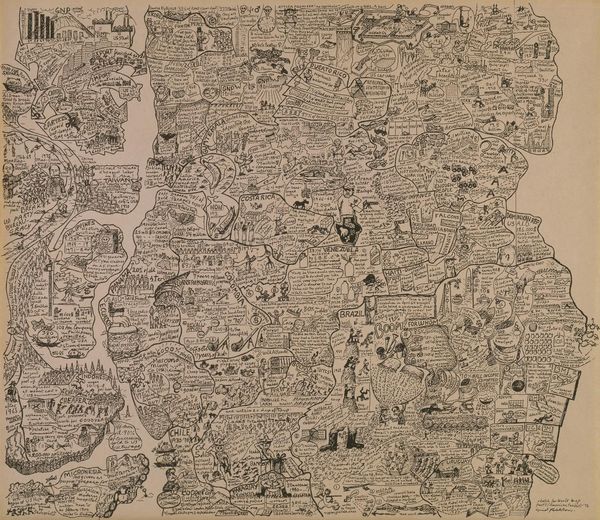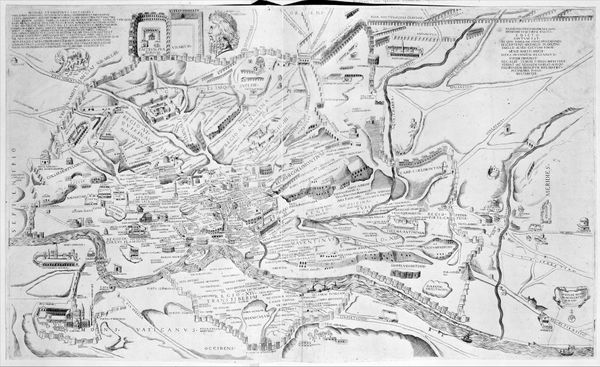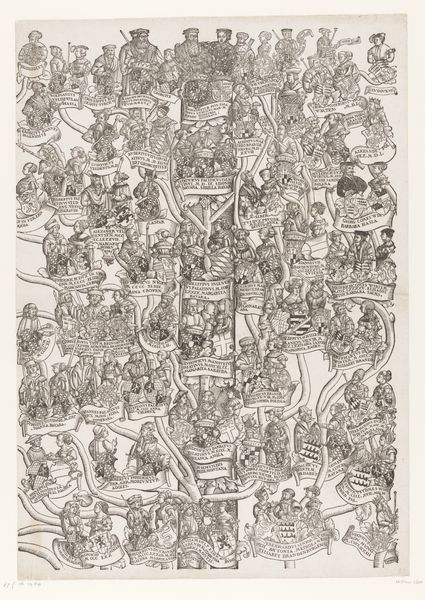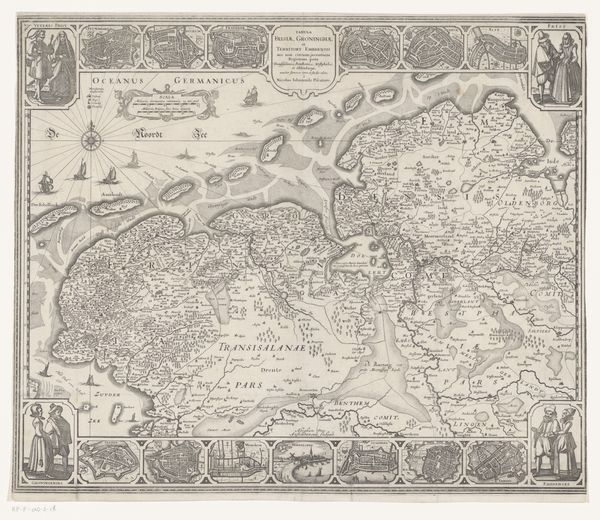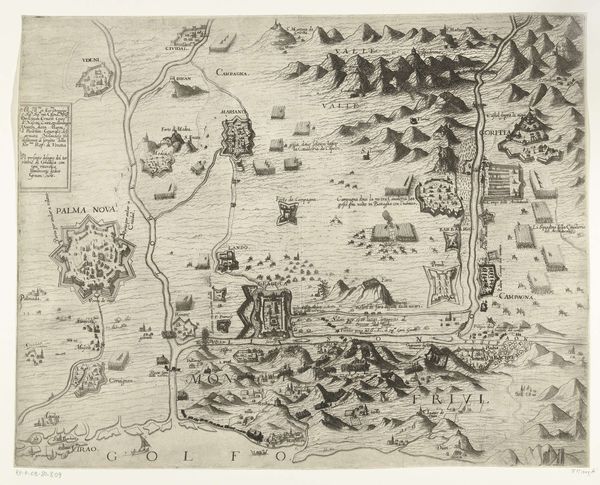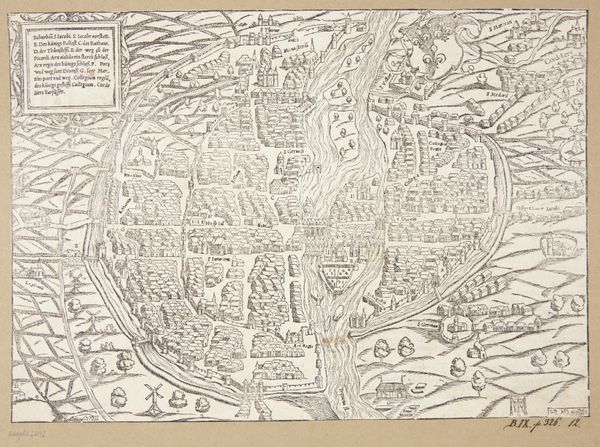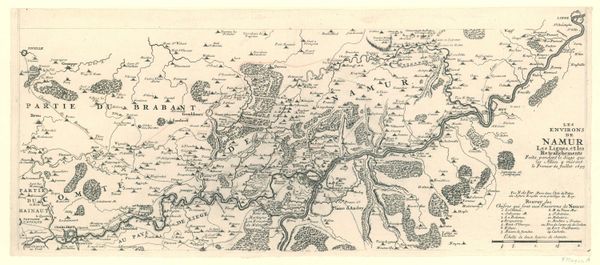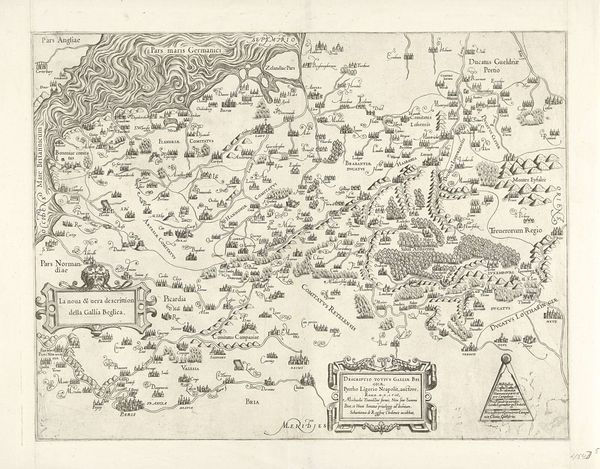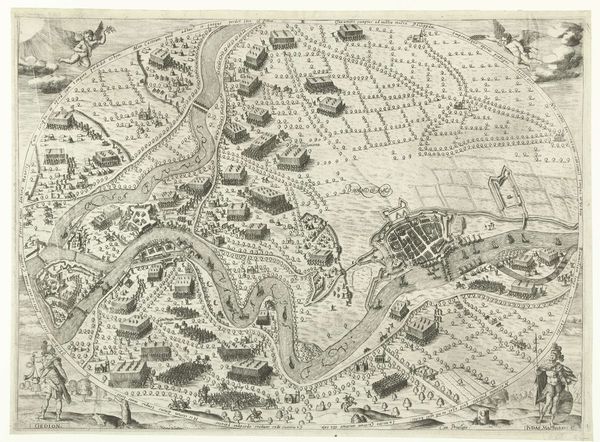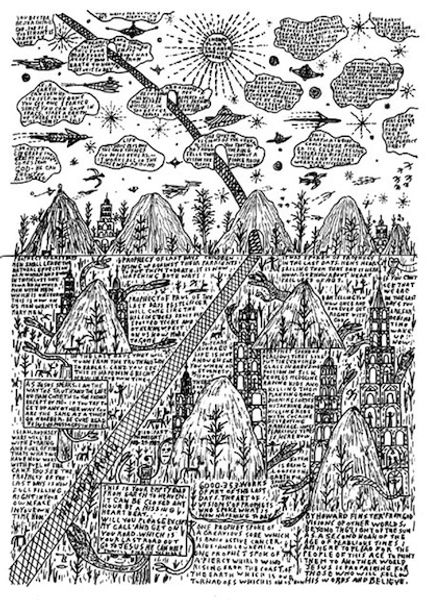
drawing, paper, ink
#
drawing
#
comic strip sketch
#
conceptual-art
#
pen drawing
#
pen illustration
#
pen sketch
#
junji ito style
#
paper
#
text
#
ink line art
#
linework heavy
#
ink
#
geometric
#
pen-ink sketch
#
pen work
#
doodle art
Copyright: Oyvind Fahlstrom,Fair Use
Curator: Welcome. We’re looking at Oyvind Fahlstrom’s "Sketch for a World Map Part 1 (Americas, Pacific)," created in 1972, a detailed drawing in ink on paper. Editor: It feels overwhelmingly busy at first glance, a chaotic cartography of… something. The lines are frantic, densely packed. Curator: Yes, the visual texture is immediately striking. Fahlstrom masterfully uses the pen to create intricate patterns. The interplay between line, shape, and form establishes an elaborate aesthetic system, doesn't it? Editor: Elaborate and also jarring. But to what end? The map seems to depict the Americas, but it’s fractured, filled with seemingly random images and text. How does this relate to the sociopolitical contexts of the 70s? Curator: I believe the intention is to defamiliarize, to challenge our traditional understanding of maps. See how conventional geography is subverted by these inserted, seemingly unrelated elements? The artist disrupts the conventional reading of cartography, and offers a space for more unconventional interpretations. Editor: Precisely! It's Fahlstrom using the map as a framework to comment on power, cultural imperialism, maybe even the Vietnam War, given the date. These aren't neutral depictions of countries. They are loaded with imagery suggesting social unrest and political commentary. I see, for example, fragmented comic-strip elements mixed in with what seems like critical annotations scrawled across the page. Curator: Indeed, it is a synthesis of varying sign systems. I see some parallels to, say, Borges's literary labyrinths or even a hyper-detailed Surrealist landscape. How does it all converge into a cohesive system? Editor: Perhaps that’s the point - it *doesn’t* fully cohere. This could serve to reveal the underlying fractures within the sociopolitical reality Fahlstrom is critiquing. The medium itself, the pen and ink, also echoes historical modes of knowledge production - drawing, documenting, marking territory, but also dissenting through caricature. Curator: That’s an insightful synthesis. So the pen becomes a tool not just for representation, but also for subversion, much like a quill used for protest pamphlets? Editor: Precisely. He prompts us to think of cartography less as a transparent, neutral description of space and more as an ideologically-laden project. Curator: Indeed. This careful composition provides an intricate framework that allows for different readings, based on viewers and changing perspectives, which leads us back to how viewers react to the visual texture first. Editor: Absolutely, seeing this drawing is ultimately an exercise in critically re-mapping our own understanding of the world.
Comments
No comments
Be the first to comment and join the conversation on the ultimate creative platform.
